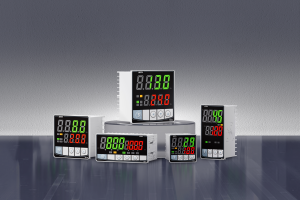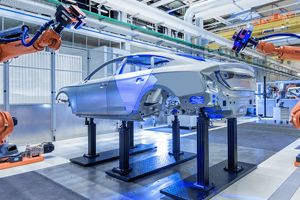purpose of PID Controller - A Comprehensive Guide
purpose of PID Controller - A Comprehensive Guide
The main purpose of the PID controller is ---- to eliminate deviation and maintain stability
The temperature controller calculates through an algorithm that the deviation between the actual output value of the system and the target set value is dynamically adjusted. In simple terms, it is to make the state of an object reach the desired effect and maintain a stable state
 1. Eliminating deviation: When the actual output value of the system and the target set value fluctuate greatly within a certain range, the temperature control system will constantly adjust to gradually reduce the gap between the two and reach the target value
1. Eliminating deviation: When the actual output value of the system and the target set value fluctuate greatly within a certain range, the temperature control system will constantly adjust to gradually reduce the gap between the two and reach the target value
2. Stable preservation: When the deviation is very small but the parameters may vary greatly due to environmental factors, the PID will quickly adjust the control strategy to keep the system temperature stable
2. The components of the PID controller - "Large throttle, small throttle, brake"
Proportion (P), integral (I), and differential (D) - three important components
Proportion: Adjust for large deviations
Points: Focus on small deviations and gradually correct them to zero
Differentiation: Predicting the speed of change
The greater the difference between the actual value and the target value, the more quickly P adjusts. When the deviation value is very efficient, I will immediately and gently adjust to narrow the distance between the two. Then, D will predict again whether the proportion of the temperature difference becomes more and more inaccurate as it is adjusted. When it is about to become inaccurate, it will directly brake to keep it stable.

The P-value = proportional coefficient × current deviation
The value of I = the coefficient of integration × (the sum of all deviations over the past period of time)
The value of D = differential coefficient × (current deviation - previous deviation)/time interval
The proportional coefficient can be regarded as sensitivity. The current deviation is the range of deviation between the actual value and the set value.
When the target value is 30℃, the current temperature has remained at 29℃ for 4 minutes, always falling short by one degree. The integration coefficient is set to "0.5" (indicating that "for every 1℃ · minute deviation accumulated, an additional 0.5 unit of power is added").
When the target value is 30℃ and the current temperature remains at 28℃, the deviation of this second is 2℃, with a time interval of 1 second. The differential coefficient is set to "3" (representing "for every 1℃ reduction in deviation per second, 3 units of power are reduced to prevent overshoot").
The combination of the three =P+I+D= total control quantity. Generally speaking, D is negative
First establish the foundation, then eliminate the deviation, and finally stabilize the fluctuation ----PID tuning principle
3. What are the practical applications of PID controllers?
Chemical Engineering/Pharmaceuticals: Temperature control of freeze dryers for pharmaceuticals and temperature control of reaction vessels
Metallurgy/Materials: Temperature Regulation of blast furnaces in Steelmaking
Food processing: Baking temperature control
Petrochemical industry: Temperature control of natural gas and oil pipelines
Energy generation: Steam pressure control
Energy field: power plants......
Manufacturing industry: Temperature control for equipment such as numerical control and machine tools
Printing and packaging: Temperature control of printing and packaging machines
It is precisely these advantages that have enabled the PID controller to develop from the industrial era to the present, becoming a "perennial tree" in the control field. When combined with modern control algorithms (such as fuzzy control and neural networks), it has further expanded its application boundaries.
- Types of Relays A Comprehensive Guide
- A Comprehensive Guide to Medical Technology for Temperature Controllers





















